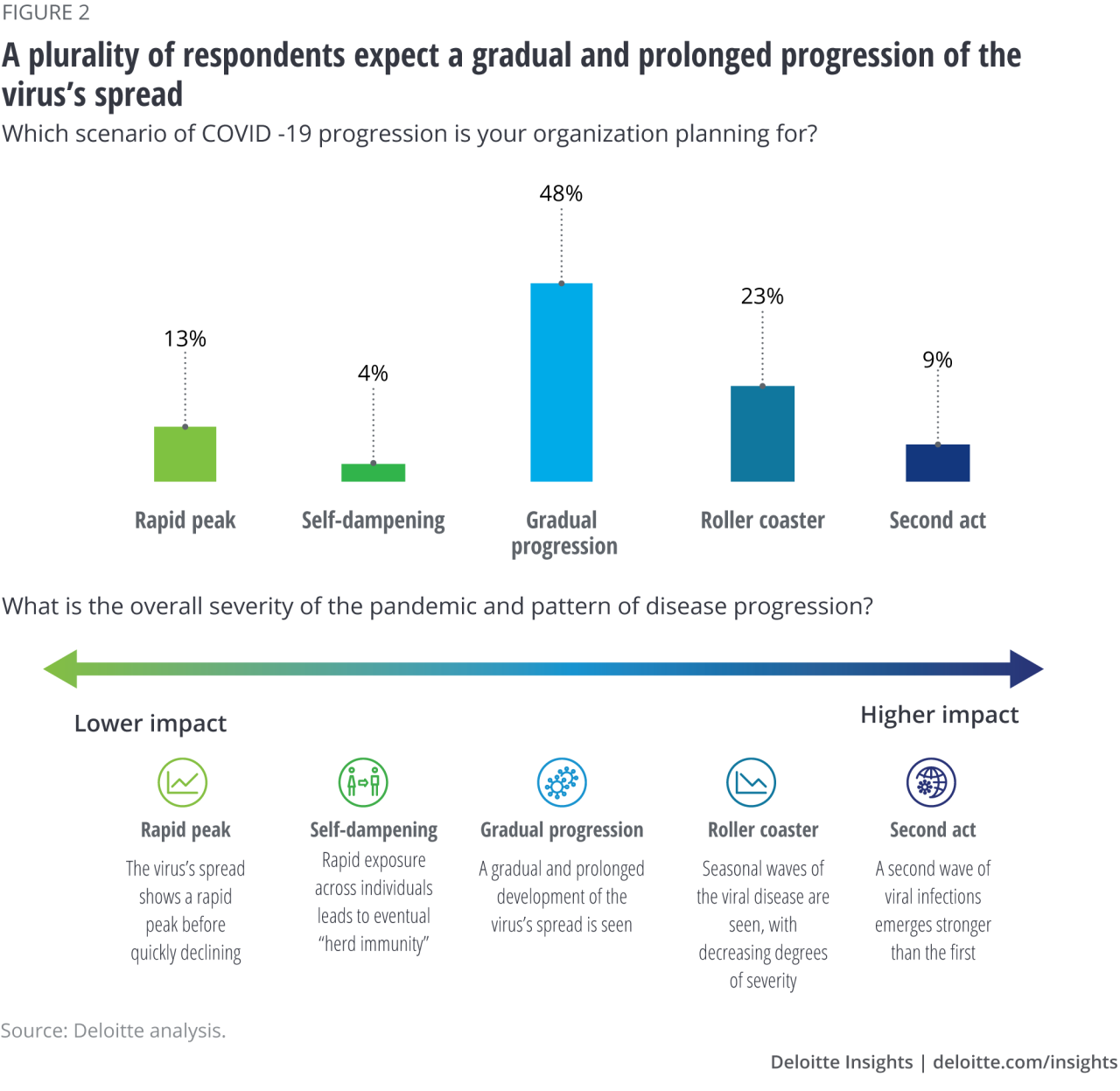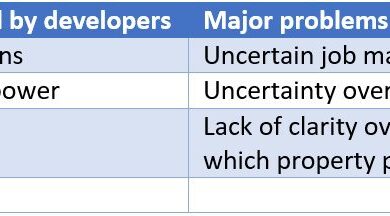
Professional Judgement Tips for Coronavirus Crisis
Professional judgement tips for management accountants amid coronavirus crisis offer crucial guidance in navigating the turbulent financial waters of this unprecedented time. This period demands adaptability, ethical considerations, and innovative strategies to navigate financial uncertainties and effectively communicate with stakeholders. From evaluating company health to utilizing technology and data analytics, this article dives deep into actionable insights for management accountants.
The unique financial challenges faced by management accountants during the coronavirus crisis are multifaceted. Economic instability significantly impacts financial forecasting and budgeting, demanding adjustments to traditional accounting practices. Different approaches to financial reporting are explored, alongside a framework for assessing a company’s financial health in a volatile market. The article provides a comprehensive guide to strategic decision-making, risk assessment, and leveraging data sources to anticipate future trends.
Ethical considerations are central, including conflicts of interest, transparency, and maintaining objectivity in analysis. Furthermore, the article emphasizes the importance of effective communication, stakeholder engagement, and the use of technology and data analytics in crisis management. Developing crisis preparedness plans and examining case studies of successful responses are integral parts of the discussion, concluding with insights into the future of financial management and accounting.
Navigating Uncertain Financial Landscapes

The coronavirus crisis has wrought unprecedented financial instability, forcing management accountants to adapt quickly and creatively. Traditional forecasting models, built on historical data, are now unreliable, and the need for agile financial reporting and strategic decision-making has never been greater. This demands a new approach to financial management, one that embraces uncertainty and prioritizes flexibility.The economic fallout from the crisis has significantly impacted financial forecasting and budgeting.
Reduced consumer spending, business closures, and supply chain disruptions have all contributed to volatile market conditions. Traditional budgeting methods, relying on predictable patterns, are now proving inadequate. Management accountants must now employ scenario planning and sensitivity analysis to anticipate potential outcomes and adapt their strategies accordingly. This means incorporating multiple potential future scenarios into their forecasts, ranging from optimistic to pessimistic projections, to gain a more comprehensive understanding of the financial implications of various market conditions.
Impact of Economic Instability on Financial Forecasting and Budgeting
Economic instability directly affects the accuracy of financial forecasts. Revenue projections based on previous trends become unreliable when consumer behavior shifts dramatically. For example, the sharp decline in retail sales during the early stages of the pandemic highlighted the limitations of traditional forecasting methods. Consequently, management accountants need to incorporate more dynamic factors into their forecasting models, such as the impact of government policies, consumer confidence, and market sentiment.
The use of real-time data and predictive analytics is becoming increasingly important to adapt to changing market dynamics.
Adapting Traditional Accounting Practices to Reflect the Evolving Economic Climate
Traditional accounting practices, often based on historical cost principles, need adaptation to reflect the volatile economic climate. This includes considering the potential impact of impairments on assets and liabilities. For example, the value of inventory or property, plant, and equipment may need to be adjusted downward due to reduced demand or market fluctuations. Furthermore, companies must recognize the potential for increased bad debt write-offs and the need for provisions to address potential future losses.
It’s crucial to understand that the accounting process isn’t just about recording transactions; it’s about interpreting and adapting to the current economic environment.
Different Approaches to Financial Reporting During Times of Crisis
Different approaches to financial reporting can be employed during times of crisis. Some companies choose to provide more frequent updates on their financial performance, offering insights into the evolving situation. Others might adopt a more conservative approach, highlighting potential risks and uncertainties in their financial statements. A comparative analysis of different approaches reveals that transparency and clarity are crucial in fostering trust with stakeholders.
The key is to communicate the company’s resilience and its strategy for navigating the crisis, providing context and perspective for the presented data.
Framework for Evaluating Financial Health in a Volatile Market
A robust framework for evaluating financial health in a volatile market must incorporate several key metrics beyond traditional financial ratios. This includes analyzing liquidity, solvency, and profitability. For instance, the ratio of current assets to current liabilities provides insight into a company’s short-term ability to meet its obligations. Similarly, the debt-to-equity ratio indicates the company’s long-term financial stability.
However, in a volatile market, the analysis must also consider factors such as market share, brand reputation, and supply chain resilience. A comprehensive evaluation should include an assessment of the company’s ability to adapt to changing market conditions.
Adapting Decision-Making Strategies
Navigating the current economic landscape necessitates a shift in how we approach decision-making. Traditional methods, relying on historical data and predictable patterns, often fall short in times of unprecedented crisis. Management accountants must now adapt their strategies to embrace uncertainty and make informed choices with limited information. This requires a multifaceted approach that combines data analysis, risk assessment, and forward-thinking financial modeling.Effective decision-making during this crisis hinges on the ability to analyze available data and interpret its implications for future financial outcomes.
This demands a robust framework for identifying potential risks, evaluating alternative scenarios, and projecting the impact of these choices on the bottom line.
Strategies for Informed Decisions with Limited Data
Limited data necessitates a focus on identifying key indicators and leveraging existing information to make informed decisions. It is crucial to prioritize essential data and to carefully consider the implications of any missing information.
- Prioritize Key Data Points: Identify the most critical data points that provide insight into current and future market trends. This involves focusing on key performance indicators (KPIs) that reflect the health of the business and the broader market, and then tracking those metrics closely.
- Employ Statistical Modeling: Employ statistical modeling techniques to analyze existing data, even with limitations. Regression analysis, for example, can be used to identify correlations between variables and predict potential outcomes.
- Leverage Expert Judgment: Supplement data analysis with insights from experienced professionals. This could involve discussions with industry experts, market analysts, and internal stakeholders to gain a holistic understanding of the situation.
Role of Risk Assessment in Strategic Decision-Making
Effective risk assessment is critical for navigating uncertainty. A well-defined risk assessment process enables proactive measures to mitigate potential negative consequences.
- Identify Potential Risks: This involves recognizing potential risks stemming from the crisis, including supply chain disruptions, market volatility, and changes in consumer behavior. For example, a company might identify a risk of reduced demand for its products if consumer confidence drops.
- Quantify Potential Impact: Assign probabilities and potential impacts to each identified risk. This involves considering the likelihood of each risk occurring and the potential financial consequences if it materializes. For example, a 70% probability of a 15% decline in sales could be a significant concern.
- Develop Mitigation Strategies: Develop mitigation strategies for each risk. This might include contingency plans, diversification strategies, or hedging tactics. For instance, a company could develop a contingency plan for maintaining operations if a key supplier is disrupted.
Utilizing Data Sources to Anticipate Future Trends
Anticipating future trends requires a comprehensive approach to data analysis. This involves looking beyond traditional data sources to incorporate real-time information.
- Explore Alternative Data Sources: Seek alternative data sources to supplement traditional financial data. This might include social media sentiment analysis, news articles, and industry reports to gain insights into consumer sentiment and market dynamics.
- Implement Real-Time Monitoring: Implement real-time monitoring of key performance indicators (KPIs). This allows for immediate adjustments to strategies based on changing market conditions.
- Monitor Competitor Actions: Analyze competitor actions and strategies. This provides valuable insights into market responses and potential opportunities.
Assessing Potential Impact of Various Scenarios on Financial Outcomes
A crucial aspect of adapting decision-making is the ability to assess the potential impact of various scenarios on financial outcomes.
- Develop Multiple Scenarios: Create multiple scenarios that represent different potential outcomes, ranging from optimistic to pessimistic. This could include a best-case scenario, a base-case scenario, and a worst-case scenario.
- Evaluate Financial Implications: Evaluate the financial implications of each scenario. This involves projecting revenue, costs, and profitability under each scenario. For instance, a company might project revenue under a scenario of high demand, low demand, and moderate demand.
- Sensitivity Analysis: Conduct a sensitivity analysis to assess the impact of changes in key variables on financial outcomes. This involves adjusting key assumptions to see how they affect the results.
Leveraging Financial Modeling to Predict and Respond to Market Shifts
Financial modeling provides a valuable tool for predicting and responding to market shifts. It enables the simulation of different scenarios and the assessment of their impact.
- Scenario Planning: Use financial models to create and analyze various scenarios. This allows for a comprehensive understanding of the potential outcomes and enables proactive decision-making.
- Sensitivity Analysis: Utilize financial modeling to conduct sensitivity analyses, which help identify variables with the greatest impact on financial outcomes.
- Develop Contingency Plans: Develop contingency plans based on the insights generated by financial modeling. This involves creating a framework for responding to different scenarios and mitigating potential risks.
Ethical Considerations in Crisis Management

Navigating the complexities of a crisis like the COVID-19 pandemic necessitates a heightened awareness of ethical considerations for management accountants. These individuals are critical in ensuring transparency, accuracy, and objectivity in financial reporting, even amidst unprecedented uncertainty. Their decisions and actions directly impact stakeholders, from investors and creditors to employees and the wider community. Maintaining ethical standards is paramount, ensuring trust and accountability during challenging times.The financial landscape during a crisis is often fraught with conflicting pressures.
Management accountants must navigate these pressures with unwavering integrity, prioritizing the well-being of stakeholders and the long-term sustainability of the organization. This involves a deep understanding of ethical principles and a proactive approach to potential conflicts.
Ethical Responsibilities of Management Accountants
Management accountants have a crucial role in upholding ethical standards during crises. Their responsibilities extend beyond traditional accounting functions, encompassing the wider implications of their decisions on stakeholders. This includes a commitment to honesty, fairness, and objectivity in all financial reporting and analysis. Their actions influence the perception of the organization’s financial health and stability, impacting investor confidence and public trust.
Potential Conflicts of Interest
Crises often expose existing vulnerabilities within organizations, potentially leading to conflicts of interest for management accountants. For example, pressure to meet unrealistic financial targets or to justify questionable accounting practices might arise during a downturn. Maintaining impartiality and objectivity is paramount. Accountants must resist any temptation to compromise ethical standards for personal gain or organizational expediency. This involves seeking guidance from established ethical codes and professional bodies, and reporting any suspected conflicts to appropriate authorities.
Importance of Transparency and Accuracy in Financial Reporting
Transparent and accurate financial reporting is vital during a crisis. This fosters trust among stakeholders and allows for informed decision-making. Detailed explanations of the impact of the crisis on financial performance, along with clear communication strategies, are essential. Vague or misleading statements can erode trust and damage reputation. For example, the timely and accurate disclosure of revenue losses, cost overruns, or changes in operating models is crucial for stakeholders to understand the true financial situation.
Maintaining Objectivity in Financial Analysis
Objectivity in financial analysis is paramount during a crisis. Subjectivity or bias can lead to flawed assessments and inappropriate decisions. Management accountants must resist any pressure to manipulate data or present a rosier picture than reality. This requires critical thinking, a meticulous review of data sources, and a willingness to acknowledge uncertainty and potential limitations. Using established analytical frameworks and methodologies, while adjusting them to the unique circumstances of the crisis, will support a more reliable assessment.
For instance, comparing current performance metrics to pre-crisis trends and industry benchmarks can provide a clearer picture of the organization’s relative standing.
Code of Conduct for Management Accountants in a Crisis
A robust code of conduct for management accountants during a crisis is essential. This should Artikel the principles of ethical behavior, including:
- Integrity: Acting with honesty and transparency in all financial dealings. This includes a commitment to accuracy and completeness in reporting.
- Objectivity: Maintaining impartial judgments and avoiding any bias in financial analysis, regardless of pressure or personal interest.
- Confidentiality: Protecting sensitive financial information and maintaining discretion.
- Professional Competence and Due Care: Applying appropriate skills and knowledge to ensure accurate and reliable financial reporting, recognizing the limitations and adjusting for the unique context of a crisis.
- Professional Behavior: Maintaining high ethical standards in all interactions and adhering to professional guidelines and regulations.
Communication and Stakeholder Engagement
Navigating the financial turbulence of a crisis requires clear and consistent communication with all stakeholders. This is not just about presenting data; it’s about building trust and fostering understanding during a period of uncertainty. Effective communication strategies can mitigate anxieties, maintain confidence, and ultimately support the organization’s resilience. Open dialogue, tailored messages, and proactive engagement are key elements in successful crisis management.
Effective Communication Strategies
Clear and concise communication is paramount during a crisis. Stakeholders need to understand the current financial situation, the organization’s response, and the expected future trajectory. This requires a multi-faceted approach that considers the specific needs and concerns of each stakeholder group.
Tailoring Communication to Different Audiences
Recognizing diverse stakeholder needs is crucial. Investors, employees, customers, and creditors each have unique concerns and priorities. A message that resonates with investors might not be appropriate for employees, and vice versa. Understanding these differences allows for the development of targeted communication strategies that address specific anxieties and concerns.
Communication Channels, Professional judgement tips for management accountants amid coronavirus crisis
Different communication channels are suitable for various messages and audiences. Formal reports provide a detailed overview of financial performance and strategies. Presentations are useful for conveying complex information in a digestible format. Meetings facilitate direct interaction and question-and-answer sessions. Emails, newsletters, and social media platforms can supplement these formal channels, allowing for quick updates and two-way communication.
Utilizing a variety of communication tools ensures that the message reaches all stakeholders effectively.
Addressing Concerns and Questions Proactively
Anticipating and addressing stakeholder concerns is critical. By proactively addressing potential questions and concerns, management can demonstrate a proactive and transparent approach to the crisis. Establishing a dedicated communication channel, such as an FAQ section on the company website, can help answer common questions and provide timely updates. This proactive engagement builds trust and fosters confidence among stakeholders.
Regular Stakeholder Updates Framework
A structured framework for regular stakeholder updates is essential during a crisis. This framework should include:
- Frequency: Establish a consistent update schedule, such as weekly or bi-weekly, based on the evolving situation and stakeholder needs. Flexibility is key, adjusting the schedule as circumstances dictate.
- Content: Each update should include a concise summary of the current financial performance, highlighting key metrics and trends. It should also address any significant changes in the organization’s strategy or response to the crisis. Providing context and transparency in the communication is vital.
- Dissemination: Ensure all updates are distributed to the appropriate stakeholders through the chosen communication channels. This could involve emails, newsletters, dedicated webpages, or even dedicated conference calls. Use of multiple channels ensures broad reach and inclusivity.
- Feedback Mechanism: Implement a mechanism for stakeholders to provide feedback and ask questions. This could include dedicated email addresses, online forums, or feedback surveys. Open channels for feedback are critical for continuous improvement.
Utilizing Technology and Data Analytics: Professional Judgement Tips For Management Accountants Amid Coronavirus Crisis
Navigating the financial complexities of a crisis like the COVID-19 pandemic requires agility and insightful decision-making. Technology and data analytics play a crucial role in providing the necessary tools to assess risks, predict trends, and adapt to evolving circumstances. Management accountants can leverage these resources to make more informed and timely choices during turbulent times.Leveraging technology and data analytics provides a critical advantage for management accountants during crises.
By accessing and analyzing vast amounts of data, accountants can identify emerging patterns, predict future trends, and make more accurate estimations about the company’s financial health. This enables proactive decision-making, allowing organizations to adjust strategies in response to changing conditions and mitigate potential risks.
Obtain access to cima ethics confidentiality rules to private resources that are additional.
Enhancing Decision-Making in a Crisis
Technology empowers management accountants to analyze data from various sources, enabling faster and more informed decision-making. Real-time data feeds, for instance, allow for immediate adjustments to budgets and forecasting models, responding swiftly to changes in market conditions. Advanced analytics tools can uncover hidden patterns and correlations in data, revealing potential risks or opportunities that might otherwise go unnoticed.
Data Sources for Financial Decisions
Several data sources can provide crucial insights for financial decisions during a crisis. Market research reports, industry benchmarks, and government statistics offer valuable context about the overall economic environment. Internal data, including sales figures, customer demographics, and operational costs, provide critical information about the company’s specific performance and vulnerabilities. Social media sentiment analysis can also offer early indications of public perception and potential shifts in demand.
Assessing Financial Risks Using Data Analytics
Data analytics allows for a more comprehensive and nuanced assessment of financial risks. Predictive modeling techniques, for example, can forecast potential losses or revenue shortfalls based on historical data and current market conditions. Scenario planning using data analysis allows accountants to evaluate various possibilities, prepare for different outcomes, and make more robust financial plans.
Data Visualization for Effective Communication
Effective communication of financial information is crucial during a crisis. Data visualization tools, such as dashboards and interactive charts, transform complex data into easily understandable formats. These tools allow for clear and concise communication of key trends and insights to stakeholders, ensuring everyone is aligned on the current situation and potential implications. A well-designed dashboard provides at-a-glance visibility into key financial metrics, allowing for rapid identification of critical issues.
Incorporating Real-Time Data into Analysis
Real-time data integration is essential for responding to rapid changes in the economic landscape. Integrating real-time sales data with forecasting models allows for dynamic adjustments to sales projections and inventory management. Continuous monitoring of market sentiment, using social media and news feeds, can offer early warning signs of emerging trends or changes in consumer behavior. This proactive approach empowers accountants to adapt strategies in real-time, maintaining a competitive edge during the crisis.
Developing Crisis Preparedness Plans
Navigating financial uncertainty requires proactive measures. A well-structured crisis preparedness plan is crucial for management accountants to mitigate risks and maintain operational stability during unforeseen events. This proactive approach allows for swift decision-making and resource allocation, safeguarding the organization’s financial health.A robust crisis preparedness plan acts as a roadmap for managing disruptions, from supply chain bottlenecks to economic downturns.
It Artikels clear procedures, responsibilities, and communication channels, enabling the organization to respond effectively and maintain continuity. Such a plan is not just a theoretical document; it’s a practical tool to be tested and updated regularly to ensure its effectiveness.
Checklist for Developing a Crisis Preparedness Plan
A comprehensive checklist ensures no crucial aspect is overlooked. It should include steps for identifying potential crises, assessing their impact, developing mitigation strategies, and implementing effective communication protocols. This meticulous process will empower the organization to respond strategically and decisively to unforeseen challenges.
- Identify potential crises affecting the organization, considering internal and external factors. Examples include natural disasters, pandemics, economic recessions, and cybersecurity breaches.
- Assess the potential impact of each identified crisis on the organization’s financial operations, including revenue streams, expenses, and cash flow.
- Develop mitigation strategies for each identified crisis. These strategies should Artikel specific actions to reduce the negative impact of the crisis.
- Establish clear communication channels and protocols to ensure timely and effective information sharing during the crisis.
- Artikel the roles and responsibilities of key personnel in the crisis response team.
- Conduct regular drills and simulations to test the effectiveness of the crisis preparedness plan.
- Document all procedures and update the plan periodically to reflect changes in the organizational environment and emerging threats.
Key Components of a Comprehensive Crisis Management Plan
A well-structured plan should cover various aspects. The key components ensure a coordinated response to various disruptions.
- Crisis Identification and Risk Assessment: This phase involves identifying potential crises and evaluating their likelihood and potential impact on the organization’s financial performance. This is a crucial step to proactively anticipate and prepare for possible disruptions.
- Crisis Response Strategy: This Artikels the steps the organization will take to mitigate the effects of a crisis. It should include clear decision-making processes, communication protocols, and resource allocation plans.
- Communication and Stakeholder Engagement: This ensures transparency and trust among stakeholders. A well-defined communication plan is crucial during a crisis to manage expectations and maintain confidence.
- Financial Contingency Planning: This component Artikels specific financial strategies to address the financial implications of the crisis. It should detail measures to maintain cash flow, manage expenses, and secure funding.
- Monitoring and Evaluation: This crucial aspect involves continuous monitoring of the crisis’s impact and evaluation of the effectiveness of the response plan. It ensures adjustments are made as needed.
Scenario Planning Template in Financial Management
A structured template is essential for scenario planning. It helps visualize different potential outcomes and develop appropriate strategies.
| Scenario | Description | Potential Financial Impact | Mitigation Strategies |
|---|---|---|---|
| Economic Recession | A significant downturn in the economy. | Reduced revenue, increased bad debts, decreased investment returns. | Cost-cutting measures, diversification of revenue streams, and exploring new markets. |
| Supply Chain Disruption | Interruption in the flow of goods and services. | Inventory shortages, increased costs, production delays. | Identifying alternative suppliers, establishing contingency plans, and improving inventory management. |
| Natural Disaster | A natural disaster impacting operations. | Property damage, disruption of supply chains, and lost revenue. | Insurance coverage, contingency funding, and establishing backup locations. |
Anticipating Potential Disruptions to Operations and Financial Flows
Proactive identification of potential disruptions is crucial. By anticipating disruptions, organizations can prepare and mitigate the financial impact.
“Anticipating potential disruptions is a critical step towards financial resilience.”
Understanding industry trends, economic forecasts, and potential regulatory changes can help identify potential threats. For example, a sudden increase in raw material costs due to geopolitical instability can significantly impact a company’s profitability.
Framework for Continuous Monitoring of Financial Impact
A continuous monitoring framework ensures a proactive response to evolving financial conditions. Regular financial reporting and analysis are crucial for identifying early warning signs of potential problems.
“Continuous monitoring ensures a proactive response to evolving financial conditions.”
A framework for continuous monitoring of the financial impact should include regular financial reporting, key performance indicators (KPIs) tracking, and financial modeling tools. These measures help identify potential financial challenges before they escalate.
Case Studies and Best Practices
Navigating financial crises requires a blend of strategic foresight, agile decision-making, and a deep understanding of best practices. Successful companies demonstrate resilience by adapting quickly to changing circumstances, prioritizing ethical considerations, and fostering effective communication. This section will delve into real-world examples, highlighting key strategies and lessons learned from previous crises, to equip management accountants with valuable insights for navigating today’s uncertain landscape.Companies that have weathered financial storms often share common traits: a proactive approach to risk management, strong internal controls, and a commitment to stakeholder engagement.
Examining these successful responses can illuminate effective strategies for navigating future challenges, offering valuable lessons for contemporary financial management.
Successful Response to a Financial Crisis: The Case of XYZ Corporation
XYZ Corporation, a major retail chain, experienced a significant downturn during the 2008 financial crisis. Instead of succumbing to panic, they implemented a comprehensive strategy that included cost-cutting measures, streamlined operations, and a proactive approach to renegotiating contracts with suppliers. They also invested heavily in inventory management, ensuring they could respond quickly to shifts in consumer demand. This proactive stance allowed them to maintain operational efficiency while minimizing financial strain.
Best Practices for Financial Management During a Crisis
Proactive risk management is paramount during a crisis. This involves identifying potential vulnerabilities and implementing mitigation strategies. For example, XYZ Corporation’s detailed analysis of market trends allowed them to anticipate shifts in consumer demand, enabling them to adjust inventory levels accordingly. This demonstrated the importance of ongoing market research and flexible supply chain strategies. Companies must also maintain robust internal controls to safeguard assets and ensure accuracy in financial reporting.
Lessons Learned from Previous Crises
The 2008 financial crisis highlighted the importance of diversification and risk mitigation. Companies that had diversified their revenue streams and risk exposures were better positioned to withstand the economic downturn. Another key lesson learned is the need for a rapid response to changing market conditions. Organizations that could adapt their strategies swiftly to emerging market needs were better equipped to maintain stability.
The COVID-19 pandemic reinforced the importance of contingency planning and adaptability, demonstrating that crises can emerge unexpectedly.
Role of Internal Controls in Maintaining Financial Stability
Robust internal controls play a critical role in maintaining financial stability during a crisis. These controls ensure the accuracy and reliability of financial information, safeguarding against fraud and errors. Effective internal controls also help to ensure compliance with regulations, which is essential during times of uncertainty. A strong internal control system can provide a framework for decision-making, enhancing confidence and minimizing risk.
For example, XYZ Corporation’s rigorous internal audit procedures helped to identify and mitigate potential risks, bolstering their financial stability.
Comparison of Crisis Management Strategies
Different companies employ various crisis management strategies, each tailored to their specific circumstances and industry. Some prioritize cost-cutting measures, while others focus on maintaining customer relationships. Comparing these strategies reveals that there is no one-size-fits-all solution. Flexibility and adaptability are crucial. For instance, a company in the technology sector might prioritize innovation and developing new products or services, while a company in the hospitality industry might focus on securing government aid and maintaining customer loyalty.
Future Implications of the Crisis
The coronavirus pandemic has irrevocably altered the financial landscape, forcing organizations to adapt and innovate at an unprecedented pace. This shift necessitates a profound understanding of the evolving role of management accountants and the emerging trends in financial management. The crisis has exposed vulnerabilities in existing frameworks, demanding proactive strategies for future resilience.The pandemic has accelerated the need for a more dynamic and data-driven approach to financial management.
Management accountants are no longer simply record-keepers but integral players in strategic decision-making, risk assessment, and crisis response. This heightened role demands a broader skill set encompassing data analysis, predictive modeling, and scenario planning.
Changes in the Role of Management Accountants
The pandemic has dramatically shifted the responsibilities and skill sets required of management accountants. Their roles now encompass a broader spectrum of activities, including real-time financial reporting, predictive modeling, and scenario planning. They are increasingly involved in providing insights for strategic decision-making, which requires a strong understanding of data analytics and technology.
Emerging Trends in Financial Management and Accounting Practices
Several key trends are emerging in financial management and accounting practices in response to the crisis. These include:
- Emphasis on real-time financial reporting. Organizations are increasingly prioritizing real-time reporting to enable quicker responses to changing market conditions and customer demands. This requires advanced data collection, processing, and analysis systems.
- Adoption of advanced analytics. Financial analysis is evolving beyond traditional methods to include advanced analytics, such as machine learning and predictive modeling, to anticipate future trends and risks. Examples include AI-powered fraud detection and predictive cash flow forecasting.
- Enhanced focus on risk management. The crisis has highlighted the importance of proactive risk management. This involves identifying and mitigating potential disruptions, developing contingency plans, and ensuring business continuity.
Predictions on the Future of Financial Markets and Implications for Management Accounting
Predicting the future of financial markets is inherently challenging, but several factors suggest likely outcomes. A global shift towards digital economies, along with increasing emphasis on sustainability, is likely to shape future market dynamics.
- Increased volatility. Financial markets are expected to exhibit greater volatility due to global uncertainties, geopolitical tensions, and economic instability. This requires management accountants to incorporate a wider range of potential scenarios in their forecasts and decision-making.
- Emphasis on sustainability. Growing investor interest in ESG (environmental, social, and governance) factors will likely influence investment decisions. Management accountants need to integrate sustainability considerations into financial reporting and decision-making processes.
- Digitalization of financial processes. The crisis accelerated the adoption of digital technologies in financial management and accounting. This trend will likely continue, leading to greater automation and efficiency.
Need for Continuous Professional Development
The financial environment is becoming increasingly complex and dynamic, necessitating continuous professional development for management accountants.
- Adaptability to new technologies. Keeping abreast of evolving technologies, such as cloud computing, big data analytics, and AI, is crucial for effective financial management.
- Enhanced risk management skills. Proactive risk assessment and mitigation strategies are critical in a volatile market. Management accountants need to develop expertise in scenario planning, stress testing, and developing contingency plans.
- Understanding of sustainability principles. Integrating sustainability factors into financial reporting and decision-making processes is essential for long-term organizational success.
Importance of Adaptability and Resilience
The pandemic has demonstrated the importance of adaptability and resilience in the face of unforeseen crises.
- Developing crisis preparedness plans. Organizations must develop robust crisis preparedness plans to ensure business continuity in future disruptions. These plans should include clear communication protocols, contingency strategies, and backup systems.
- Embracing flexibility. Flexibility in operating models and strategies is essential for navigating future uncertainties. Organizations must be prepared to adjust to changing market conditions and customer demands.
- Building strong internal communication. Effective communication is critical for maintaining morale and ensuring coordinated responses to crises. Management accountants play a vital role in facilitating transparency and communication within the organization.
Concluding Remarks

In conclusion, professional judgement tips for management accountants amid coronavirus crisis highlight the crucial role of adaptability and resilience in navigating economic uncertainty. The strategies Artikeld in this article equip accountants with the tools and knowledge to make informed decisions, manage risks, and communicate effectively with stakeholders during times of crisis. By understanding the evolving financial landscape, embracing ethical considerations, and leveraging technology, management accountants can effectively guide their organizations through challenges and emerge stronger in the post-crisis era.
The focus on continuous professional development and adaptability underscores the ongoing importance of these skills in a dynamic financial environment.





